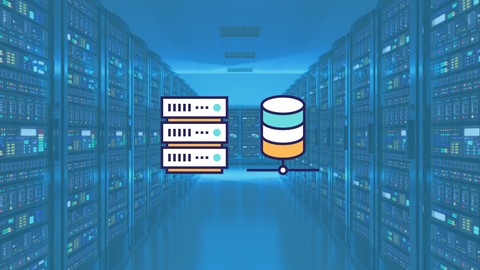
Learn Partitioning in PostgreSQL from Scratch
Learn Partitioning in PostgreSQL from Scratch, available at $49.99, has an average rating of 3.55, with 42 lectures, 6 quizzes, based on 83 reviews, and has 572 subscribers.
You will learn about Understand what, when and how to partition Implement partitions in production system Write optimized queries to make use of the designed partitions Handle maintenance tasks related to partitions Automate all the tasks that has got to do with partitions This course is ideal for individuals who are Database Administrators or Database or Data Warehouse programmers or Application developers using PostgreSQL as their backend or ETL developers It is particularly useful for Database Administrators or Database or Data Warehouse programmers or Application developers using PostgreSQL as their backend or ETL developers.
Enroll now: Learn Partitioning in PostgreSQL from Scratch
Summary
Title: Learn Partitioning in PostgreSQL from Scratch
Price: $49.99
Average Rating: 3.55
Number of Lectures: 42
Number of Quizzes: 6
Number of Published Lectures: 42
Number of Published Quizzes: 6
Number of Curriculum Items: 48
Number of Published Curriculum Objects: 48
Original Price: $39.99
Quality Status: approved
Status: Live
What You Will Learn
- Understand what, when and how to partition
- Implement partitions in production system
- Write optimized queries to make use of the designed partitions
- Handle maintenance tasks related to partitions
- Automate all the tasks that has got to do with partitions
Who Should Attend
- Database Administrators
- Database or Data Warehouse programmers
- Application developers using PostgreSQL as their backend
- ETL developers
Target Audiences
- Database Administrators
- Database or Data Warehouse programmers
- Application developers using PostgreSQL as their backend
- ETL developers
Learn the key terminologies, basic concepts, implementation techniques that you will need to build a, fully functional partitioned tables with PostgreSQL database. Every concepts or topics are covered with hands on demo session, along with English Caption / Subtitles to provide better clarity.
Many of the key concepts learned in this course can be applied on other databases as well.�
Handling huge volume of data / big tables in RDBMS
There are plenty of opportunities in data domain, and being able to learn and appreciate the importance of data volume handling through Partitions in RDBMS, will give you a confidence to tackle the challenges that you encounter in real time projects.
Content and Overview
Through this 7 session course, with more than 40 lectures, 6 Quiz chapters along with additional resources, you will�
- Understand what, when and how to Partition.
- Gain confidence in implementing Partitions in Production system
- Know how to write optimized queries on the partitioned tables
- Be able to handle maintenance tasks related to partitions
- Understand how to automate all the tasks related to partitions
You can test the knowledge gained through the sessions by attending quizzes and every use case mentioned in the course are explained with demo sessions thereby enabling you to practice the newly learned skills.�
Downloadable Resources
You can also download the source code files used during the demo sessions, to practice at your end. The source code files are available for download as part of the last section named “Resources”.
Learners who complete this course will gain the knowledge and confidence to implement a fully functional and automated Partitioning solutions in the projects.
Course Curriculum
Chapter 1: Course Introduction
Lecture 1: Introduction
Chapter 2: Building the Foundation
Lecture 1: Module Overview
Lecture 2: What is Partitioning and What to Partition?
Lecture 3: Why to Partition?
Lecture 4: When to Partition?
Lecture 5: Determining the Partition Key
Lecture 6: Tablespace
Lecture 7: Inheritance – Part – 1
Lecture 8: Demo – Inheritance – Part – 1
Lecture 9: Inheritance – Part – 2
Lecture 10: Demo – Inheritance – Part – 2
Lecture 11: Inheritance – Part – 3
Lecture 12: Demo – Inheritance – Part – 3
Lecture 13: Inheritance – Limitations
Lecture 14: Check constraints
Lecture 15: Functions and Triggers
Lecture 16: Rules
Lecture 17: Vacuum
Lecture 18: Analyze & Explain
Lecture 19: Module Summary
Chapter 3: Types and Methods of Partitioning
Lecture 1: Range and List Partitions
Lecture 2: Demo on Range and List Partitions
Lecture 3: Demo on Trigger based Partition method
Lecture 4: Demo on Rules based Partition method
Lecture 5: Triggers based Partitions vs Rules based Partitions
Chapter 4: Optimized Query Execution
Lecture 1: Module Overview
Lecture 2: Key Rules
Lecture 3: Constraint Exclusion and Its impact on Query plans
Lecture 4: Demo – constraint exclusion – PARTITION mode
Lecture 5: Demo – constraint exclusion – ON mode
Lecture 6: Demo – constraint exclusion – OFF mode
Chapter 5: Production Use Cases
Lecture 1: Module Overview
Lecture 2: How to Partition existing tables with data in it?
Lecture 3: Automate partition table creation by scheduling
Lecture 4: Automate data insertion into corresponding partitions
Lecture 5: Selecting Partitioned tables in PostgreSQL
Lecture 6: How to make a partitioned table back to Non partitioned table?
Lecture 7: Retention handling with Partitions
Lecture 8: Handling partition key value changes with update trigger
Chapter 6: Limitations and Cautionary Notes
Lecture 1: Limitations and Cautionary Notes
Chapter 7: Conclusion
Lecture 1: What Next?
Lecture 2: Source Codes – Resources
Instructors
-
Rajkumar V
Data Architect
Rating Distribution
- 1 stars: 3 votes
- 2 stars: 8 votes
- 3 stars: 27 votes
- 4 stars: 20 votes
- 5 stars: 25 votes
Frequently Asked Questions
How long do I have access to the course materials?
You can view and review the lecture materials indefinitely, like an on-demand channel.
Can I take my courses with me wherever I go?
Definitely! If you have an internet connection, courses on Udemy are available on any device at any time. If you don’t have an internet connection, some instructors also let their students download course lectures. That’s up to the instructor though, so make sure you get on their good side!
You may also like
- Best Video Editing Courses to Learn in March 2025
- Best Music Production Courses to Learn in March 2025
- Best Animation Courses to Learn in March 2025
- Best Digital Illustration Courses to Learn in March 2025
- Best Renewable Energy Courses to Learn in March 2025
- Best Sustainable Living Courses to Learn in March 2025
- Best Ethical AI Courses to Learn in March 2025
- Best Cybersecurity Fundamentals Courses to Learn in March 2025
- Best Smart Home Technology Courses to Learn in March 2025
- Best Holistic Health Courses to Learn in March 2025
- Best Nutrition And Diet Planning Courses to Learn in March 2025
- Best Yoga Instruction Courses to Learn in March 2025
- Best Stress Management Courses to Learn in March 2025
- Best Mindfulness Meditation Courses to Learn in March 2025
- Best Life Coaching Courses to Learn in March 2025
- Best Career Development Courses to Learn in March 2025
- Best Relationship Building Courses to Learn in March 2025
- Best Parenting Skills Courses to Learn in March 2025
- Best Home Improvement Courses to Learn in March 2025
- Best Gardening Courses to Learn in March 2025






















